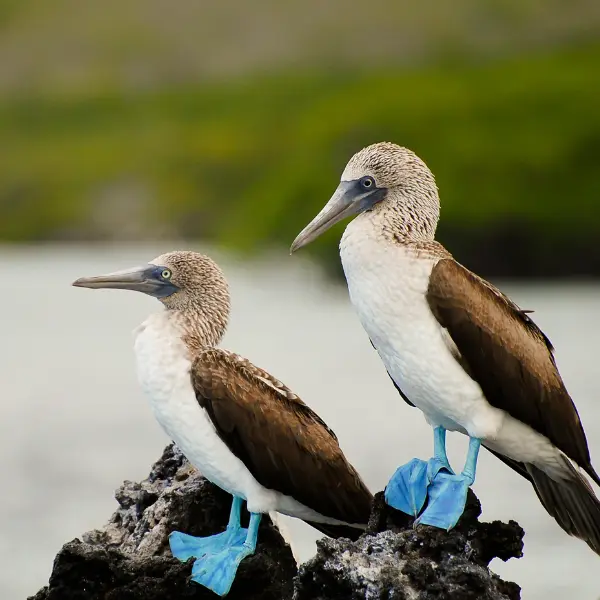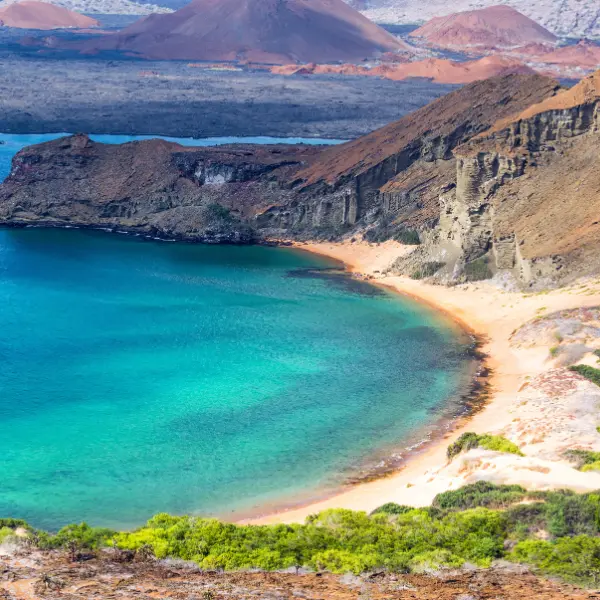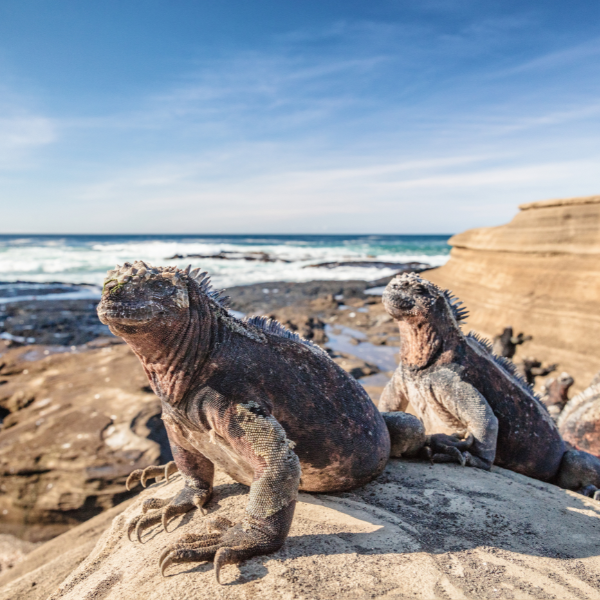


Cusco , Machu Picchu , Sacred Valley , Rainbow Mountain , Lima , Galapagos Islands , Quito .

Galapagos Islands , Quito .

Cusco , Machu Picchu , Sacred Valley , Lima , Galapagos Islands .

Galapagos Islands , Quito .
The best time to visit the Galápagos Islands depends on what travelers want to experience. From December to May, the warm and wet season offers calmer seas, sunny skies, and vibrant marine life, making it perfect for snorkeling and beach activities. From June to November, the cooler and drier season brings nutrient-rich waters, attracting more seabirds and larger marine species, ideal for diving and wildlife watching. Both seasons provide unique opportunities to enjoy the islands.
Top tours in the Galápagos include island-hopping cruises that visit several islands, guided snorkeling or diving excursions, and wildlife observation tours to see iconic species like giant tortoises, blue-footed boobies, and marine iguanas. Visits to Santa Cruz Island’s Charles Darwin Research Station, Bartolomé Island with its iconic Pinnacle Rock, and Española Island to see waved albatrosses are among the highlights. Each tour offers a chance to witness the islands’ extraordinary biodiversity.
Activities in the Galápagos range from snorkeling and scuba diving with sea lions, turtles, and tropical fish to hiking volcanic landscapes and relaxing on pristine beaches. Kayaking, paddleboarding, and wildlife photography are also popular. Visitors can explore lava tunnels, swim in natural lagoons, or simply observe the fascinating behavior of unique species that live without fear of humans.
The Galápagos Islands have two main seasons: the warm season from December to May, with average temperatures between 24–30°C, and the cool season from June to November, with temperatures between 19–25°C. The cooler season is influenced by the Humboldt Current, which brings nutrient-rich waters but also choppier seas. Regardless of the season, the islands are a year-round destination, each period offering distinct natural spectacles.
The Galápagos Islands are served by two main airports: Seymour Airport on Baltra Island and San Cristóbal Airport. Both receive flights from mainland Ecuador, specifically from Quito and Guayaquil. Upon arrival, visitors can connect to their hotels, tours, or cruises via short ferry rides and land transfers organized by tour operators.
Accommodations in the Galápagos vary from luxury eco-lodges and boutique hotels to budget guesthouses, mainly concentrated on Santa Cruz, San Cristóbal, and Isabela Islands. Many properties emphasize sustainability and eco-friendly practices, blending comfort with environmental responsibility. For a more immersive experience, live-aboard cruises provide accommodation while exploring multiple islands.
The islands offer a mix of local and international cuisine, with fresh seafood as the star. Dishes like ceviche, grilled lobster, and fish prepared with tropical flavors are widely available. Santa Cruz Island’s Puerto Ayora has the most diverse dining options, from fine dining restaurants to casual eateries serving traditional Ecuadorian food. Fresh fruit juices and locally brewed coffee are also popular.
Credit and debit cards are accepted in larger towns like Puerto Ayora and Puerto Baquerizo Moreno, but cash in U.S. dollars (the local currency) is essential for smaller islands, markets, and community shops. ATMs are limited, so it is highly advisable to bring enough cash before traveling between islands. Some tours and accommodations require cash payments as well.
The Galápagos Islands celebrate a few local festivities, such as the founding of Puerto Baquerizo Moreno in February and the celebration of San Cristóbal’s patron saint in July. These events often include parades, music, and dances. On the mainland, Ecuadorian holidays may also influence activities in the islands. Visitors may also encounter traditional ceremonies performed by local communities.
The Galápagos Islands, located about 1,000 km off the coast of Ecuador, are a UNESCO World Heritage Site and one of the most biodiverse regions in the world. Made famous by Charles Darwin’s studies, the archipelago is home to species found nowhere else on Earth. The islands’ protected national park and marine reserve ensure conservation while offering visitors a chance to experience nature in its purest form.
Highlights of the Galápagos include Santa Cruz Island with its giant tortoise reserves, Isabela Island with its volcanic landscapes and penguin colonies, and Bartolomé Island, known for Pinnacle Rock and snorkeling with penguins. Española Island offers birdwatching opportunities, while San Cristóbal Island is perfect for learning about conservation efforts. Each island provides unique ecosystems and unforgettable encounters with wildlife.

We're flexible! Postpone your tour with zero cost up to 10 days prior to departure.